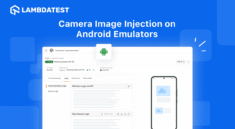AI AI AI and RAG
Chatbots are everywhere, but many forget the context or answers repeatedly. AI AI AI IN CHATBOTS FABRIC Manage history and take data for smarter responses, conscious context.
Here AI AI AI And RAG (Generation of Taking-Agung) Steps to enter together, they make chatbots smarter and more reliable. AI AI acts like a manager in a chatbot.
They handle the chat history, decide what data must be taken, and still use token under control. RAG adds another layer.
This allows chatbot to attract real information from outside sources, not just what is trained.
For developers, this means building chatbots that are cost -effective and conscious context.
With better memory, smart taking, and fewer wasted token, users get answers that feel natural and accurate.
And in fields such as e-commerce, these tools open doors for personalized shopping assistance, product recommendations, and fast support.
In this blog, we will explore the role of AI agents in cloth chatbots, their core functions, and how we can use it to build stronger applications.
What is AI agent in chatbots?
At the elementary level, chatbot is powered by the Large Language Model (LLM). LLM takes input, processing it, and providing answers.
Although this serves for simple tasks, he often struggles with longer conversations or special domain knowledge.
Here AI AI AI enter. AI agents like smart coordinators. Instead of letting LLM do everything, the agent decides what steps to take.
This can manage history, take documents, or even call external tools. Think of the agent as the “brain behind the brain” chatbot.
This is the difference in the key:
- A Plain chatbot Answer only with what is remembered from training.
- A Agent -powered chatbot Can see the previous chat again, take new data, and provide the latest and accurate answers.
In practice, this makes the chatbot more flexible. This can handle multi-turn conversations, maintain the right context, and avoid self-repetition.
For developers, this also means more control over tokens, costs, and performance.
The role of AI agents in cloth chatbots

AI AIA plays a central role in making smart cloth chatbots. They help manage the history of chat, make documents taking, and reduce the use of tokens. Let’s look at every function.
3.1 AI AIA for Historical Management
Chatbots often forget past conversations. This can make users frustrated. Ai Ai fixed it by tracking the chat history. They summarize long conversations and keep important details.
For example, in an e-commerce chatbot, the agent can remember that the user asked about the previous “running shoes”.
Then, if the user says, “Show a similar option,” the agent can provide relevant products without asking again.
This approach also stores tokens. Instead of sending all the conversations to LLM every time, the agent only sends important points.
AI agent for taking documents
Fabric chatbots depend on documents or external data to answer questions. AI agents can automatically find the right documents based on the conversation.
For example, users might ask, “Show T-shirts.” The agent takes T-shirt data, and LLM displays the results.
Then, the user asked, “What is the price or cloth of the first product?”
AI AIA analyzes the chat, makes new queries to take the correct product information, and then the chatbot gives the answer.
Writing Document
AI agents can produce or update these documents automatically.
For example, agents can change FAQ, product descriptions, or support tickets into structured collection documents.
Then, when LLM needs information, it asks these documents instead of guessing. This makes answers more accurate and relevant.
Token optimization
Tokens require costs and affect the speed of response. AI agents help reduce the use of tokens by summarizing chat, cutting unnecessary contexts, and choosing what will be sent to LLM.
For example, if the user has a long conversation about many products, agents can only maintain important things like the product category and user preferences when removing unrelated details.
This makes chatbot fast and cost effective.
Other Practical Use (E-Commerce Chat)
Outside of memory and token management, AI agents can make e-commerce chat more smart in other ways:
- Product Recommendations: Suggest items based on questions or previous purchases.
- Dynamic FAQ: Take product info or the latest policies in real-time.
- Personalization: Adapting the response to the user’s force or preference.
- Analysis: Track popular questions and highlight gaps in your knowledge base.
AI AIA basically makes a cloth chatbots Context, efficient, and smart.
They handle heavy lifts behind the scenes, let the developers focus on the construction of transfer features -investigating raw data.
Implementation of AI agents in the cloth chatbot
Building AI agent-powered cloth chatbot may look complex, but it can be managed when you break it into clear steps.
Developers can combine LLM, agents, and taking tools to make smart and efficient chatbots.
High level architecture
Typical settings include three layers:
- LLM Layer: Produce a response to using natural language.
- Agent layer: Acts as a coordinator. This manages the chat history, deciding which documents will be requested, and optimize the use of tokens.
- Database layer / vector taking: Embeddings of documents for fast and accurate collection.
Data flow like this: the user sends queries → the agent decides what to take → LLM produces a response using the documents taken and the context of the chat.
Tools and frameworks
Developers can use existing tools to simplify implementation:
- Langchain: For agent orchestration and chain management.
- Llamaindex: To make and request the collection documents.
- Vector Database: Pinecone, Chromadb, Weviate, or Milvus for fast embedding search.
Examples of workflows
- User Kueri: “Show running shoes.”
- Agent analysis: Check past chat and identify user intentions.
- Document collection: Search for vector databases for relevant product information.
- Response Generation: LLM results in a response using the data taken.
- Follow -up: If the user asks, “What is the price or material?” The agent prepares a smooth query and only takes the necessary information.
- Reply chatbot: Provide the right answer and conscious context while minimizing the use of token.
Best practice for developers
- Brief History of Chat: Only save important details for storing tokens.
- Refine Retrieval Queries: Let the agent analyze the user’s input and context before searching.
- Monitor token use: Track which part of the chat consumed is the most token and optimized.
- Test with real scenarios: E-commerce queries, support, and knowledge base often behave differently; iterate appropriate.
AI agent making cloth chatbots scalable, efficient, and smart.
With the right architecture and tools, the developer can build applications that provide accurate and conscious responses without burdening LLM or token waste.
Summary
AI AI brings structure and intelligence to cloth chatbots. They manage history, write better questions, and reduce the use of tokens.
With this ability, chatbots can answer questions more accurately, remain cost -effective, and handle longer conversations without losing context.
For developers, the blueprint is directly:
- Use LLM for language, agents for coordination, and vector databases for taking.
- Add tools such as Langchain or Llamaindex, and you can build chatbots that work well in cases of real use such as e-commerce, support, or knowledge search.
In short, AI agents make cloth chatbots smarter, faster, and more reliable. They are the key to moving from simple bots to sophisticated assistants who really understand the user.
News
Berita
News Flash
Blog
Technology
Sports
Sport
Football
Tips
Finance
Berita Terkini
Berita Terbaru
Berita Kekinian
News
Berita Terkini
Olahraga
Pasang Internet Myrepublic
Jasa Import China
Jasa Import Door to Door


